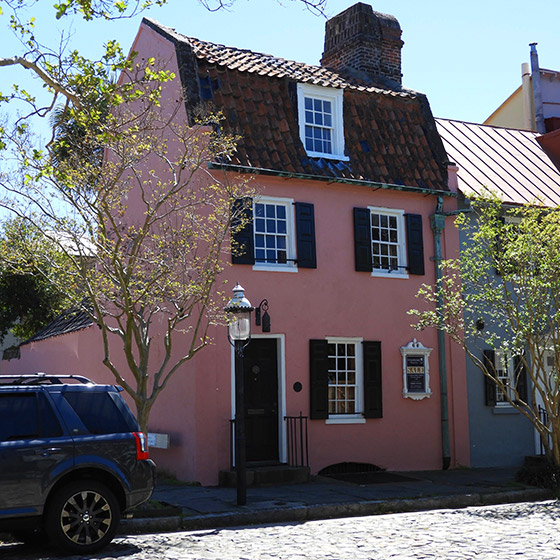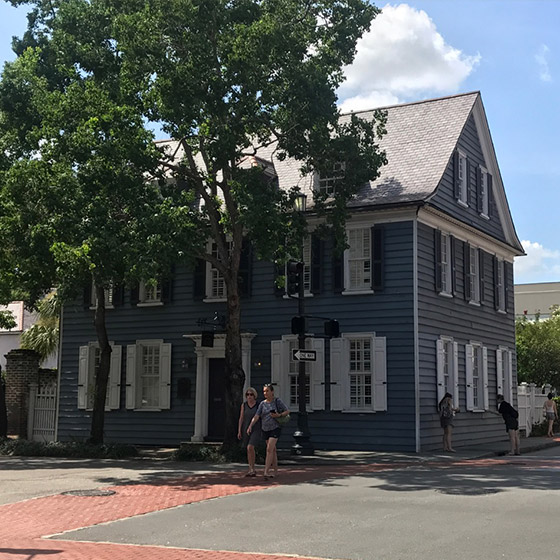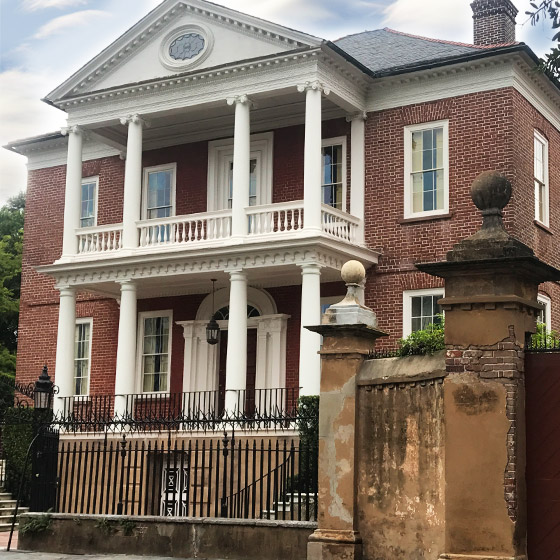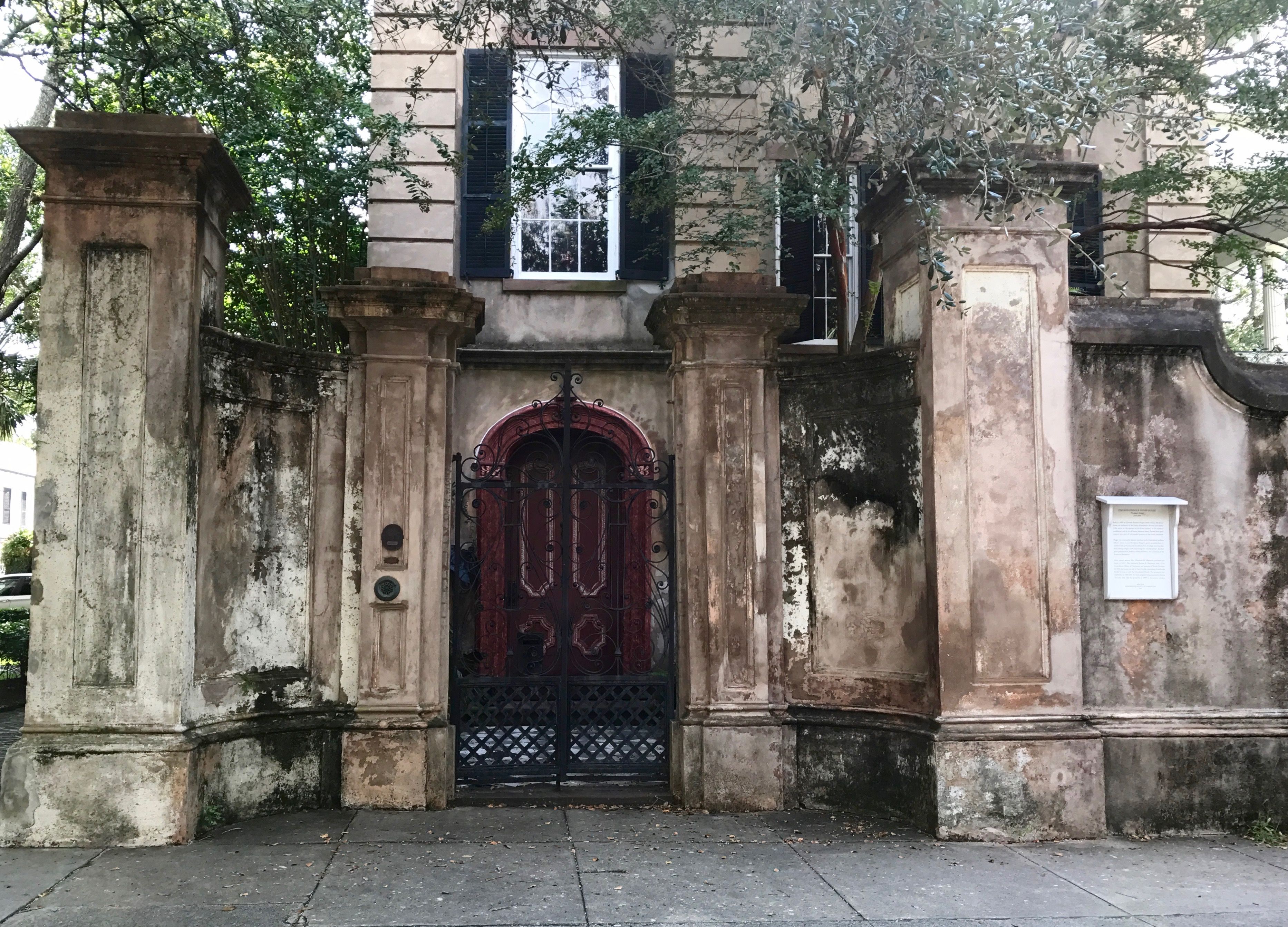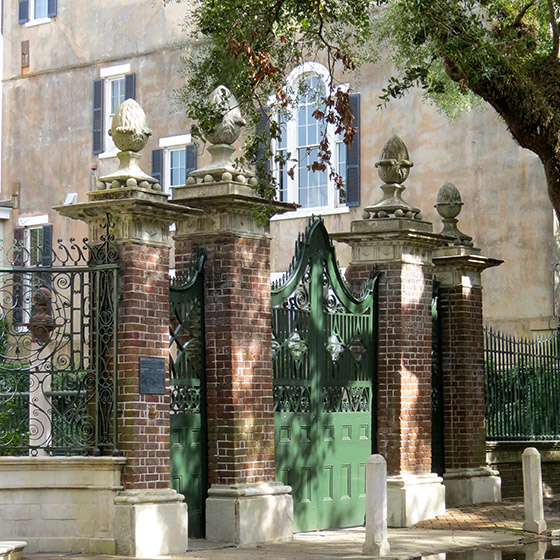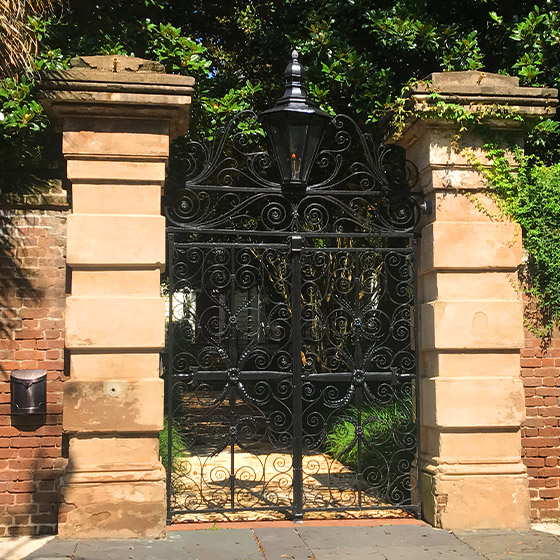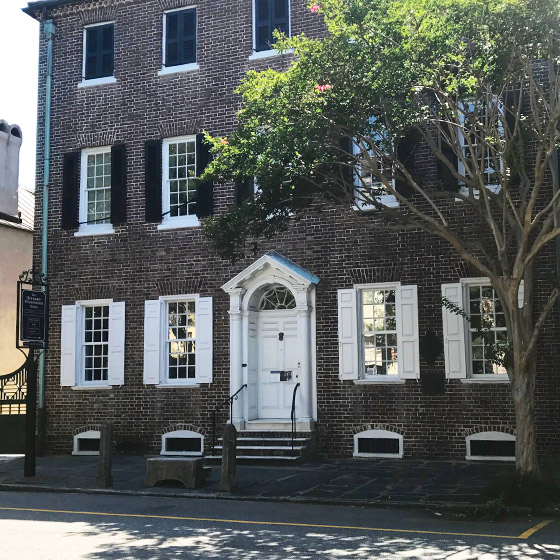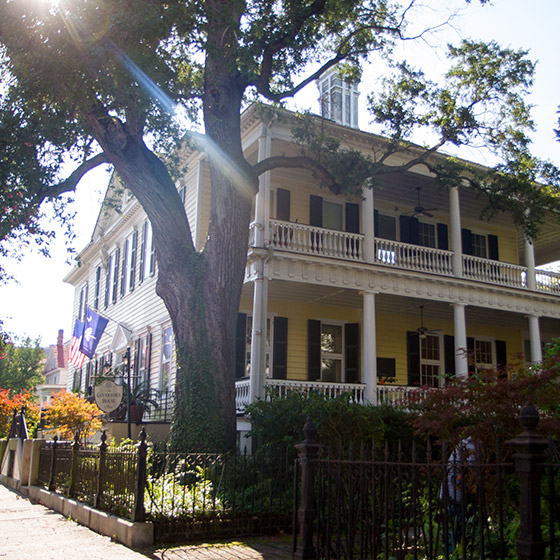17 Chalmers Street is known as the Pink House primarily because...it's pink.
The Pink House is a favorite of artists, photographers, and visitors for several reasons. First is the color. Second is the wonderful gambrel tile roof. Third is the unusual shape when viewed from the left corner side; instead of being blocked by a house on the left, there is a parking lot. Fourth is the fact that the street in front is paved with cobblestones. All of which adds up to extremely and undeniably picturesque.

